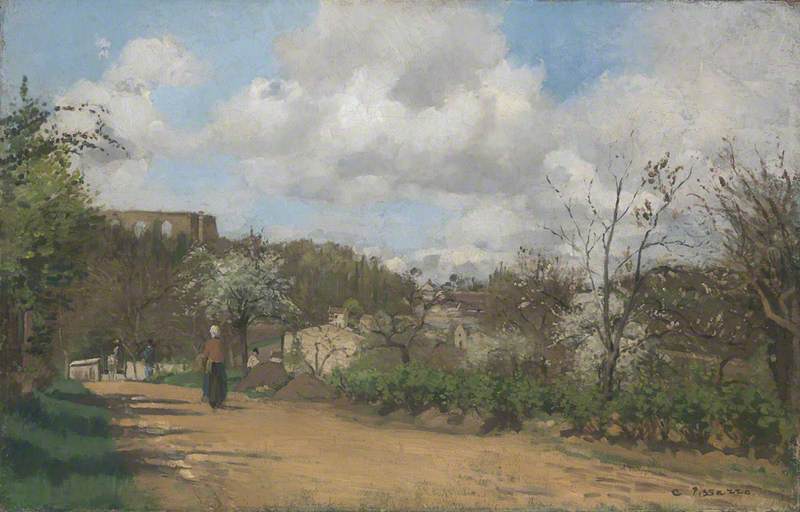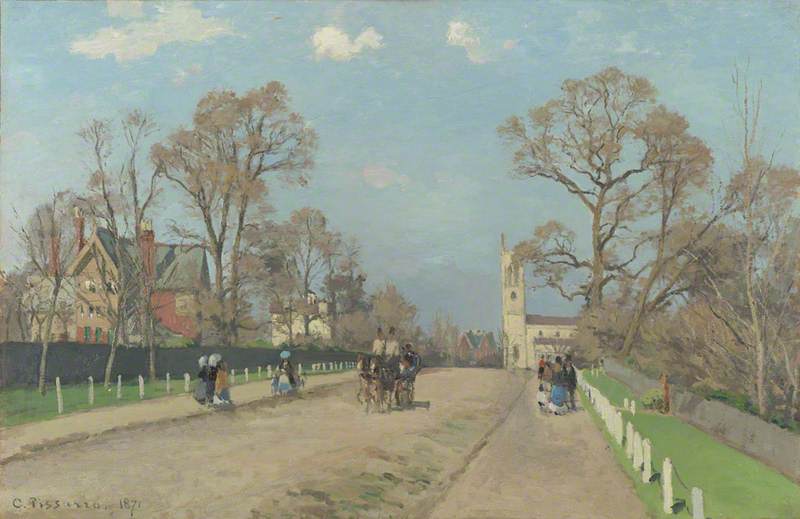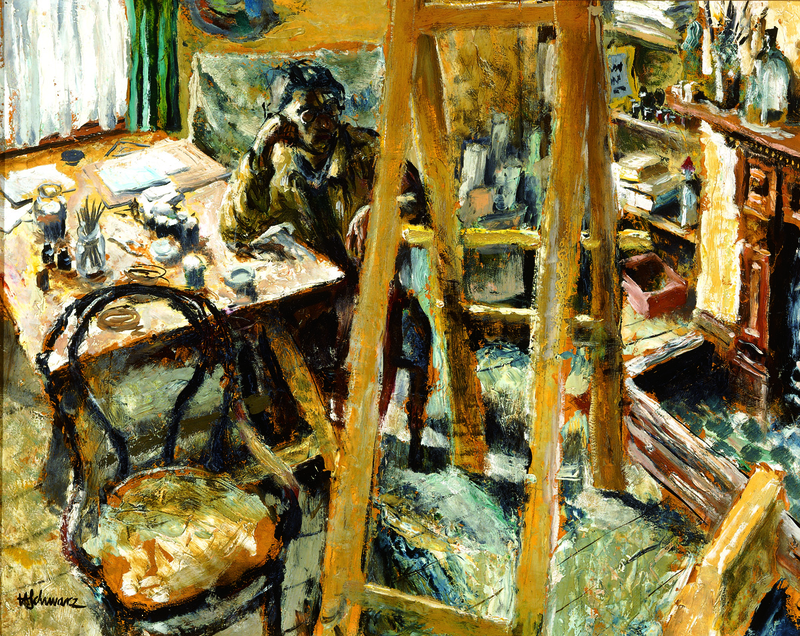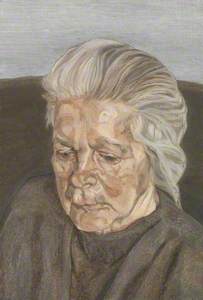1. Marc Chagall (1887–1985)
Born in Russia to Jewish parents, Chagall remained in his country of origin throughout the First World War, despite living in Paris from 1910 to 1914. During the War he painted powerful and emotive works that commented on the atrocities of his day such as Jew in Green (private collection), and The Poet Reclining (Le Poète allongé). The latter work depicts him lying alone in the Russian countryside with his arms crossed over his body, and his hand reaching towards his neck as though he is suffocating in his surroundings.
In 1923 Chagall moved back to France, and later gained French citizenship in 1937. His popularity was growing, but following the German invasion he was stripped of his new nationality. He was targeted because he was a Jew, and his work was destroyed and removed from museums across Germany. Fortunately he was listed by the Director of MOMA in New York as an artist who was at high-risk from the Nazis, which meant in 1941 he was able to escape to Spain and thereafter move to the USA, which he did so for the duration of the rest of the Second World War.
The Yellow Crucifixion (1943) and The Juggler (1943) are important examples of works that most reflect his struggles.
2. Camille Pissarro (1830–1903)
Pissarro settled in Louveciennes in France in 1869, however during the Franco-Prussian War of 1870–1871 he and his family were forced to flee France. Their journey took them to London, where they met with Monet.
Whilst away, Pissarro's home was overrun by German invaders and many of his paintings were destroyed. When he returned after the War he found that it had been completely looted. Sadly only 40 of his 1,500 paintings were undamaged. This was almost 20 years of work destroyed in just one year. This devastating discovery prompted him to move to Pontoise in 1872.
During his time in London Pissarro created some interesting work; he painted much of South East London, including this work of Sydenham.
3. Hans Schwarz (1922–2003)
Born in 1922 to Jewish parents living in Vienna you can already imagine what atrocities were to happen to Hans Schwarz. He began studying art at 14 but was forced to flee and stop his education in 1938. He managed to escape to Britain aged 16 and was sponsored by the famous British chocolate company, Cadbury. He worked at Bournville and was known to be a talented artist, however he faced further set back when he was interned at Peveril Camp on the Isle of Man for being an ‘enemy alien’.
In the Autumn of 1941, Schwarz began art school in Birmingham, realising the importance of painting. He quickly progressed to being a very successful commercial artist and illustrator and in 1953 moved to London, working at the Clement Dane studios. In 1964, he gave up commercial work and devoted all his time to painting, sculpture and writing. Many of his works are now in multiple public collections across the UK.
In his obituary in the Independent he is described as: 'one of that great number of Central European Jews who, forced into exile by the rise of Hitler, have so enhanced British cultural life.'
4. Jean Hélion (1904–1987)
Hélion moved to the USA out of choice in 1936, but in 1940 he decided to return to Europe and join the French army. However this did not go according to plan and shortly after he joined the army he was captured as a prisoner of war and imprisoned on a ship in Poland. He managed to escape in 1942 and made his way to Paris and then on to the USA.
One year later in 1943 he wrote about his experiences and titled the book They Shall Not Have Me. It became a best-seller. He produced some of his most famous works during his time in the USA.
5. Lucian Freud (1922–2011)
One of the most famous painters of the twentieth and twenty-first century, Freud was born in Berlin in 1922 but had to flee Germany in 1933.
His father, Ernst, son of Sigmund Freud, brought his family to London as refugees but many of their relatives died in concentration camps. They were British citizens by 1939 and Freud died in London in 2011.
Alice Payne, Art UK Head of Content





















